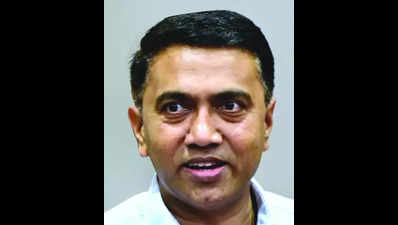Trending
CM Pramod Sawant: With Rs 312 crore in loans, Goa SHGs establish 480 brands
Panaji: Self-help groups (SHGs) in Goa have established 480 brands in the state, chief minister Pramod Sawant said on Thursday. He said that banks disbursed financial assistance in the form of loans amounting to Rs 312 crore to SHGs in the state.

He also said that the setting up of a supermarket for the sale of SHG products through the National Rural Livelihood Mission (NRLM).
“Goa houses 3,250 SHGs in the state, with a disbursed fund of Rs 8.2 crore. The schemes are implemented with funds allocated according to a 60% from Union govt and 40% from the state formula.
“The banks disbursed loans amounting to Rs 312 crore to the SHGs in the state, and there are 480 brands developed and operated by SHGs under the GSRLM,” Sawant said.
During the meeting, various topics were discussed, including increasing the number of SHGs by around 300-400 in the state and digitising records of SHGs with e-bookkeepers. He said that govt has extended the target for Lakhpati Didis to 17,000 women, for which 17,331 women SHG members have been identified.
Sawant said that SHG members should be covered with accident death insurance, and 141 members were registered as Bima Sakhi to implement the vision of ‘Insurance for All’.
The CM said that 141 SHGs were enrolled under the Mukhya Mantri Annapurna Yojana and they operate nine canteens. The Start-up village enterprise programme has 2,039 beneficiaries from five talukas, in addition to One Station One Product at two railway stations.
“Sales are up to Rs 2.5 lakh a day during the season,” Sawant said.
He said Goa govt and the GSRLM are committed to implementing all the schemes, including Namo Drone Didi and others under the umbrella scheme of Lakhpati Didi, for the all-round development of women and rural households in the state.
End of Article
FOLLOW US ON SOCIAL MEDIA
Visual Stories
Hot Picks
TOP TRENDING
Explore Every Corner
Across The Globe





















